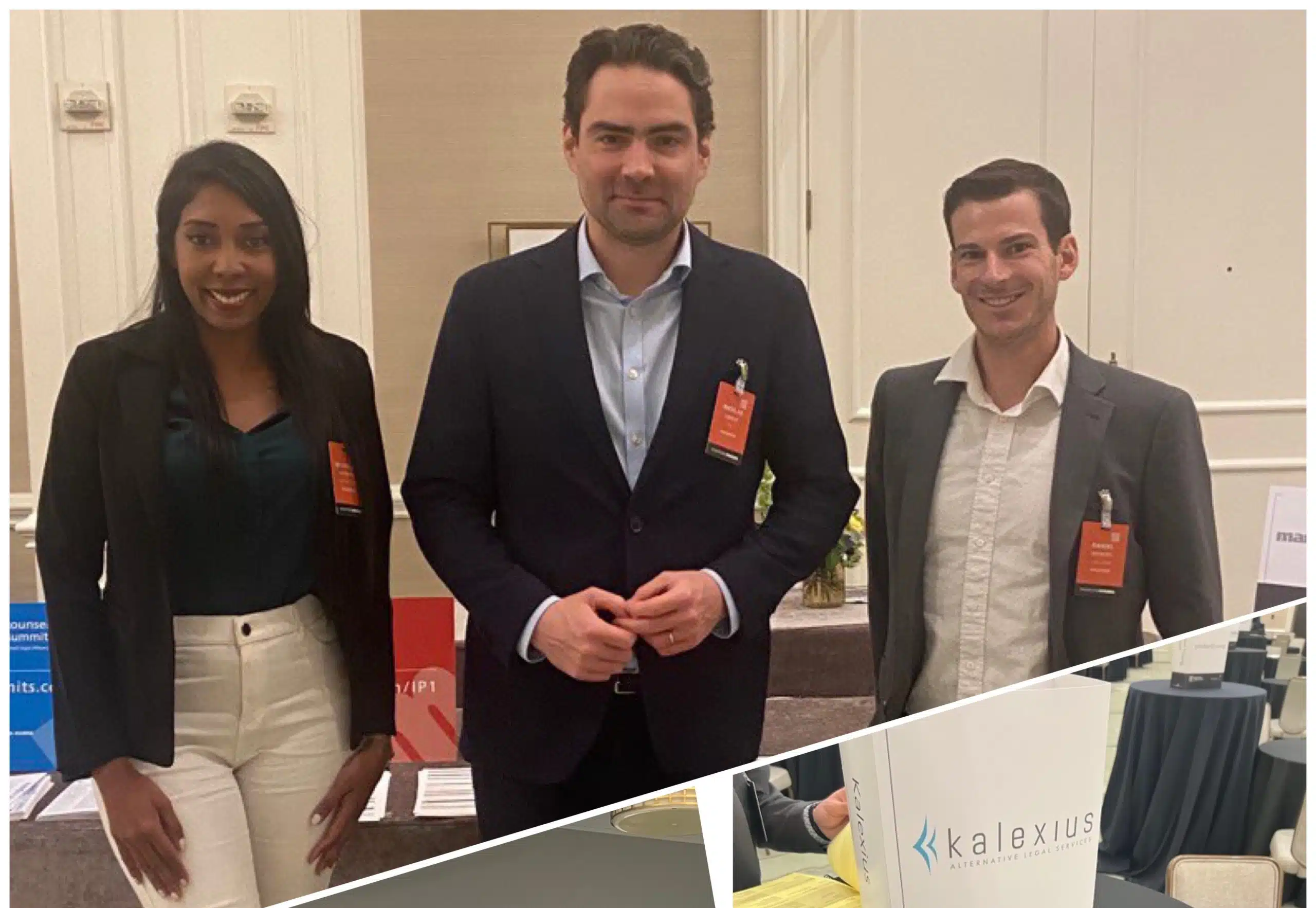
In-house legal departments in the financial sector have been kept busy with regulatory repaperings since 2016.
This year, IM and LIBOR loom large with upcoming deadlines in September and December.
It is incredibly difficult for in-house legal teams to manage both business-as-usual support and these regulatory repaperings which can involve negotiating thousands of documents. On top of the sheer volume, there are high stakes involved in getting the project right. Reputational risks and regulatory fines are at the forefront of all financial institutions’ minds.
Given the temporary nature and high volume of this work, extra resources are always required and there are many different solutions, from hiring contractors, instructing law firms or turning to ALSPs such as Kalexius. While most in-house teams are usually familiar with the first two options, they don’t always know how ALSPs can help.
Let’s dive into how in-house teams can benefit from working with ALSPs on such projects, namely in the context of IM and LIBOR. Note that on many projects, contractors, law firms and ALSPs can all be involved on different parts of the project.
The ALSP approach
Phase 1
The initial phase of a regulatory project includes:
- Identification of key legal issues;
- Estimation of the amount of work;
- Project Kick Off.
Legal advice can be provided by a traditional law firm for use by the client but also by the ALSP in order to create templates and playbooks. The majority of work to be undertaken on regulatory projects is essentially transactional and does not fit the commercial model of a traditional law firm which is built on hourly rates.
It is usually difficult to have a precise idea of how many contracts will be required to be negotiated or repapered from day one but having an initial estimate will allow you to start discussions with providers.
At Kalexius, our legal operations department gets involved based on initial projections to help structure the project and answer the following questions:
- Which legal tech solution is required?
- Approximately how many resources are needed?
- What is the optimum mix of senior and junior resources in order to balance quality and cost?
They identify the different phases of the project, process workflows and the time needed for preparation and execution. With a clear picture in mind, they can set the agenda at Project Kick Off meetings.

Phase 2
When starting the project, the following requirements come into play:
- Setting up the projects team;
- More precise scoping;
- Early communication with counterparties;
- Establish custodial relationships for IM.
In collaboration with the ALSP, the second phase involves scoping affected counterparties more precisely and communicating with these counterparties. This should be done as early as possible in the process so that the counterparties know when to expect documentation.
IM projects involve third party custodian relationships and complex documentation. As a result, the lead times need to be generous and agreeing on custodian relationships upfront will save a significant amount of time.
For LIBOR amendments, many counterparties do not realise that although the ISDA Protocols and Supplements are now published and effective, many documents will still require bilateral negotiation even on the derivatives side. This is of particular import in relation to collateral agreements including EONIA and Fed Funds rates. On the loans side, agent banks will require a dedicated team and will usually work with a law firm as well as an ALSP.
In this phase, “special cases” must be identified, i.e., counterparties that fall outside of the standard approach and will need to be dealt with separately and will perhaps require more senior resources.
Although as lawyers, we often focus on the negotiation of the contract, this is actually a very small part of the overall picture. At Kalexius, we structure the project and timelines to take into account all the relevant parameters and prepare appropriate lead times. A playbook is developed to ensure a seamless workflow for negotiation.
In addition to the operational and structural work carried out by legal operations supporting the lawyers, legal work at this stage encompasses:
- finalising templates;
- analysing legal or regulatory issues identified;
- finalising comms to be sent with documentation.
Counterparty communications must be clear and detailed (without straying into the area of legal advice). The more effective the communication, the easier it will be for the counterparty to respond with the minimum of iterations. Costs are driven down by this approach to communication.
In a similar vein to communication, time spent up front on ensuring templates are fit for purpose is rewarded with less time and cost spent in negotiation. Where it is possible to accommodate likely counterparty objections/positions within the template, drafting these documents increases the number of agreements which require little or no negotiation.
Phase 3
With the framework now set, negotiations can begin. We focus on the following items:
- Negotiation of terms;
- Reporting and databases;
- Finalizing.
Once phases 1 and 2 have successfully set out the structure and preparation of the work, phase 3 involves sending out and negotiating the required documentation.

The ALSP provides regular progress reports to the client for transparency and efficiency purposes, as well as identifying and implementing any necessary changes to the playbook following counterparty feedback. The ALSP will normally update any relevant client databases as part of the process.
The ALSP Project Manager tracks and reports progress against deadlines at agreed upon intervals.
The success of this final phase rests to a large extent with the degree of structure and time spent on Phases 1 and 2.
What's next?
Although lawyers often focus on the legal advice surrounding a regulatory project, the bulk of the legal advice is often merely a sub-section of Phase 1 and Phase 3. The majority of time and cost associated with the project occurs after the legal advice has been provided.
ALSPs such as Kalexius allow in-house lawyers to focus on strategic, higher value matters rather than being drawn into volume transactional work. Legal operations professionals including project managers bring a different skill set to high volume legal projects.
IM and LIBOR deadlines are fast approaching and the volume of work can seem daunting. Kalexius is ready to take on your projects to make sure you meet regulatory deadlines.


